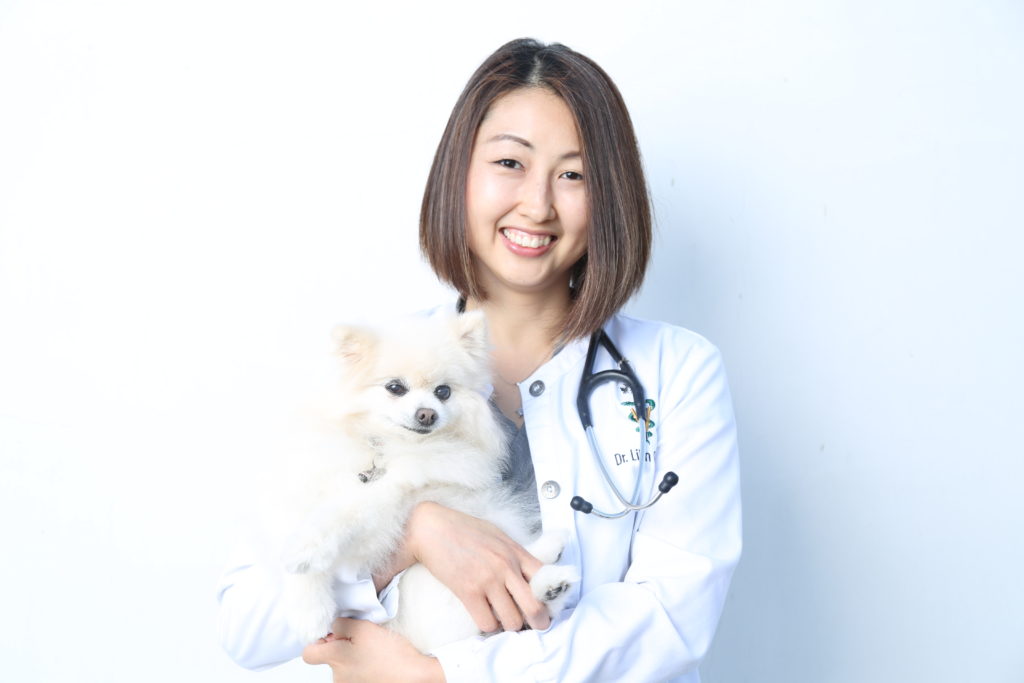
I was sitting on the exam room floor with Lucy, a 13-year-old black Labrador Retriever. Her eyes darted from her mom, then to me, and back to her mom as we talked, her tail gently wagged every time her name was mentioned, making soft thudding noises on the floor. Mom was holding back tears when she said, “Isn’t there anything else you can do for her?”
Lucy had severe arthritis that limited her mobility. She could barely get up and when she moved, it was with great difficulty. We knew she was in pain and we tried medications, but we couldn’t get the result that we hoped for. We also decided together not to pursue treatments that were overly intrusive. But Lucy loved life – she loved being around her family and following them around to see what was going on with everyone. Her health was good otherwise, but her arthritis was causing significant quality of life concerns. I’ve been treating Lucy for years, she was one of my favorite patients. My heart was breaking for her and I wanted to wave a magic wand and cure her debilitating condition. My brain raced to search for all other possibilities that can help with her condition but in a gentle way that was right for her family.
This was the beginning of my journey as an integrative veterinarian – to practice both conventional western medicine and holistic eastern medicine. It started with an overwhelming desire to be able to offer more options for my patients. Two years later I received my certification of veterinary acupuncture and really began to incorporate eastern medicine modalities into my existing western practice.
Practicing integrative medicine means the best of both worlds to me. I love the advancements of scientific diagnostic tools and treatment modalities that continue to provide specific ways to improve the physical wellbeing of the animals. At the same time, I am a strong advocate for using holistic modalities to heal the body as a whole.
In my mind, combining both modalities should be a harmonious art, weaving together threads of different practices and philosophies and ultimately creating a fabric of options that are unique for each patient and their circumstances.
But sometimes, it becomes difficult to blend the worlds of western and eastern medicine. Most troubling to me is how divisive our profession can be when we disagree on the different approaches of patient care.
For example, what do you think the ideal diet for a pet should be?
This topic has always triggered passionate responses from the pet-loving community. The debates intensified with the recent discovery of problems associated with grain-free diets.
I can scroll through comments firing off in the veterinary community with colleagues on each side passionately defending their beliefs. But I am often shocked when this escalates to blaming and name-calling.
If I came into a holistic discussion as a western practitioner, would I be immediately considered as closed-minded and dogmatic? And what if I presented myself in a conventional veterinary forum as a holistic veterinarian, would my colleagues dismiss things I have to say as anecdotal and woo-woo?
At the end of the day, I can’t choose sides. I can’t even see why there are sides. These labels that we place on each other are discrediting all of the hard work we have done to get to where we are. And we are all working towards a common goal of giving our patients the best life possible.
I am not suggesting we can all agree. Our practice of veterinary medicine is our art. An art curated to the unique needs of each patient. We can choose to disagree with a colleague, and we can choose to do so respectfully. We can share more facts, rather than emotions, so others can learn and grow from these lessons. We can put aside our biases, in the name of advancement of knowledge. We can listen.
What I know, for a fact, is everyone I have met in the veterinary community has the best interests of our patients in mind. I don’t know of another profession that cares so deeply and personally about the work we do. This is an industry of compassion. The compassion and empathy we have for our patients and their families, we can have for each other – because we are all really working towards the same goals.
As for Lucy at that time, I continued to manage her care as her regular veterinarian with conventional medicine, while another colleague took her on to treat her with acupuncture and Chinese herbal medicine. Lucy had the best of both worlds. She had another year and a half of very good life, going on walks and playing outside with her family. These are the things that meant the most to her and her family.
The views and opinions expressed in this article are those of the author and do not necessarily reflect the position of the DrAndyRoark.com editorial team.
ABOUT THE AUTHOR

Lily Chen, DVM, CVA is an integrative veterinarian practicing in Southern California.